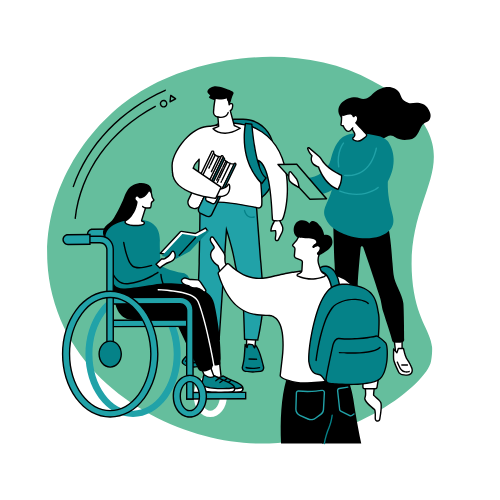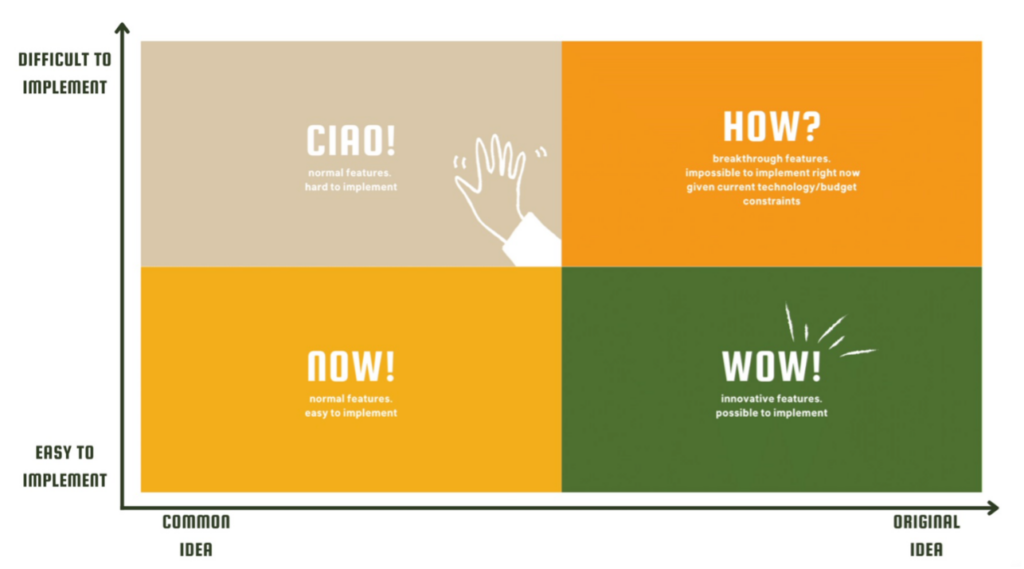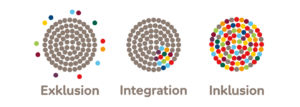Inclusion

Inclusion means that everyone can participate everywhere – regardless of gender, age or origin, religion or education, any disabilities or other individual characteristics.
The modern globalised world is characterised by variety and cultural diversity, which creates an increasing need for inclusion in order to provide equal opportunities for all people regardless of their origin and identity. The growing interconnectedness and interaction between different cultures and groups makes the need for inclusive measures to counteract discrimination and marginalisation ever clearer. Inclusion promotes understanding and acceptance of different perspectives and thus contributes to a more peaceful and harmonious society.
While music holds huge potential for inclusion, the reality of music education paints a different picture and shows that there’s a high need for more inclusive measures within the sector.
- The Nutshell
- Relevance for Music Educators
- Music Education and Inclusion
-
Video
- Activities
- Resources
The term inclusion has its roots in Latin. It means: “to include”, “to insert”, “to give in” or “to let in”. Inclusion means the equal participation of all people, regardless of their individual characteristics or features, in all areas of society. The core of inclusion therefore lies in creating a society in which no one is disadvantaged or excluded due to their origin, gender, sexual orientation, physical or mental abilities or other characteristics. Inclusion is therefore a central component of a democratic society, as it helps to ensure that all people have equal opportunities to realise their potential and participate in social life. This includes not only access to education, work, health and social participation, but also the opportunity to freely express their opinions and advocate their needs and interests. An important aspect of inclusion is recognising diversity as an enrichment for society. It is about recognising differences not as a deficit or obstacle, but as an opportunity for mutual enrichment and shared learning. In practice, inclusion means that structures, institutions, and processes are designed in such a way that they take people’s diversity into account and offer them equal opportunities to participate. This includes, for example, barrier-free access, diverse teaching and learning methods, anti-discrimination measures and the promotion of intercultural skills. Overall, inclusion is about creating a society that is characterised by solidarity, respect and equality and in which all people are recognised and respected as equal members, regardless of their individual characteristics.
|
Music teachers need to be sensitised to inclusion as they often work with a variety of students with different needs and abilities. Inclusion means that every student should have the opportunity to participate in music lessons and realise their full potential, regardless of their background, individual limitations or disabilities.
Music educators need to be equipped to break down barriers and ensure that all students have equal opportunities to experience and learn music. They must be able to offer different teaching methods and materials to meet the different needs of their students. In addition, music educators should be sensitive to the emotional and social needs of their students and create a supportive and inclusive learning environment.
By being sensitive to inclusion, music educators can ensure that all students can enjoy the benefits of music lessons and feel supported in their personal development. This helps to foster a sense of belonging and cohesion in the music community and to value the cultural diversity and individual talents of all students.
Music is something that is practiced across all cultures but in many European countries, music education is often quite exclusive, as it can be associated with high costs. Access to serious music, such as classical music or opera, often requires financial investment for tickets, instruments or lessons. This excludes many people who do not have the financial means to afford this luxury. In a society that should promote diversity and inclusion, this is a situation that urgently needs to be reconsidered.
Nevertheless, music also offers great potential for inclusion, as it is a language that connects people all over the world and can be very accessible. Music is a universal form of communication that can bridge different cultures, languages and backgrounds. It can express emotions, provide comfort and create community. This potential should be utilised to make music accessible to all people, regardless of their social status.
Music education is therefore a field that has a high need of but also high potential for inclusion. Promoting music education in an inclusive environment means giving all people the opportunity to experience and express music in their own way. By seeing music as something deeply human and using it as a tool for social inclusion and understanding, we can create a more inclusive and diverse society.
Activities
Instructions:
Let participants stand in a line and read out questions. Each time they can answer a question with “yes” they can do a step forward. At the end come together and discuss what you learned about exclusion and the need for inclusion.
Here are two lists of questions. Adapt and use them according to your needs.
The first one is by the American Psychological Association. Some questions might need to be adapted to fit your cultural setting.
The second one is put together by the University of Freiburg. Here the participants take on a role. This might make the experience more comfortable for some and give opportunity to empathise without having to expose yourself.
The Wow-How-Now method is suitable when the process of collecting ideas is largely completed and you need to set priorities. The ideas collected are evaluated according to their originality or innovative strength as well as on the basis of their feasibility and entered into a matrix. In this way, the team can decide which ideas to select to continue the process.

- The DT team draws a two-axis matrix (2×2).
- The Y-axis is referred to with the term originality,
- the X-axis with feasibility.
- The field at the top right is labelled “How” (the originality is high, but it is difficult to implement); “Wow” follows at the bottom right (the originality is high, so is the feasibility – the best ideas will be found here later); “Now ” is written at the bottom left (the originality is low, but the feasibility is feasible – short-term measures can be collected here). In the field at the top left, ideas are written down that are neither original nor feasible – they will not be used for the rest of the process, so you can say “Ciao”.
- Be sure to discuss these decisions in the team.
I-Care Toolbox:
These materials were developed to help professionals in the health sector strengthen their intercultural competences. Many principles are as well applicable to music educators who work with students from diverse backgrounds.
https://www.i-care-project.net/toolbox-materials/
This toolbox offers modules amongst others on:
- Culture, Diversity & raising Awareness (1)
- Intercultural Communication (2)
- Eating, Drinking, Celebrating & Fasting (3)
- Disability, Psychology & Mental Problems (7)

